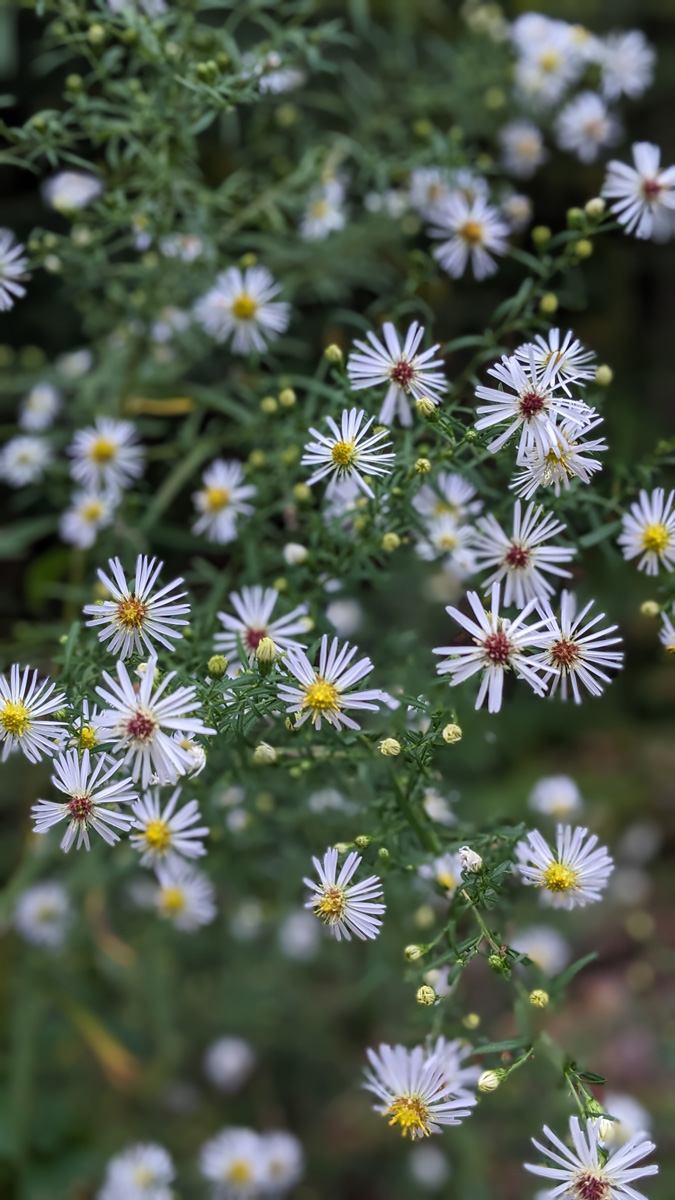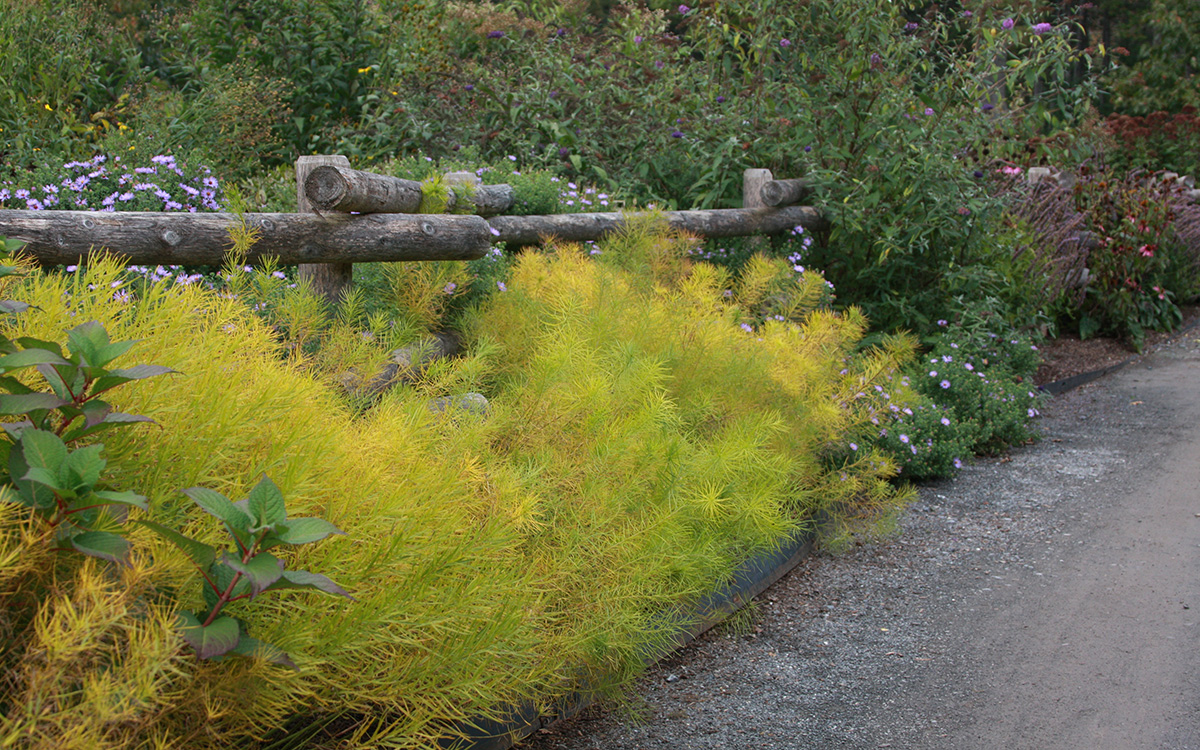One deer can do major landscape damage overnight, and if a herd regularly visits your garden you may feel like giving up. Although almost no plant is completely safe if the herbivores are hungry enough, gardeners facing extreme deer pressure aren’t powerless. Incorporating plants with “nasty” characteristics like strong smells, prickly textures, or even toxicity is one easy way to encourage those hooved hordes to browse elsewhere. In this episode, Danielle and Carol share some of the plants that have remained unscathed in their backyards, and expert Bonni Engelhardt weighs in with some of her own go-to selections.
Expert: Bonni Engelhardt is a landscape designer and consultant based in southwestern Oregon. You can read about more of her deer-resistant plant recommendations in this article.
Danielle’s Plants
Swamp aster (Symphyotrichum puniceum, Zones 3-9)

Slender-leaved false foxglove (Agalinis tenuifolia, annual)

‘Red October’ big bluestem (Andropogon gerardii ‘Red October’, Zones 4-9)

Daphniphyllum (Daphniphyllum macropodum, Zones 7-9)

Carol’s Plants
‘Ellagance Purple’ lavender (Lavandula angustifolia ‘Ellagance Purple’, Zones 5-7)

‘Elegant Feather’ dog fennel (Eupatorium capillifolium ‘Elegant Feather’, Zones 6-9)

‘Thunderhead’ Japanese black pine (Pinus thunbergii ‘Thunderhead’, Zones 5-8)

‘Royal Purple’ smoke bush (Cotinus coggygria ‘Royal Purple, Zones 4–8)

Expert’s Plants
Hardy Jerusalem sage (Phlomis russeliana, Zones 5-9)

‘Russian River’ coyote mint (Monardella villosa ‘Russian River’, Zones 6-9)

Arkansas bluestar (Amsonia hubrichtii, Zones 4–9)
‘Hosoba-fukurin’ silverberry (Elaeagnus pungens ‘Hosoba-fukurin’, Zones 7-10)


